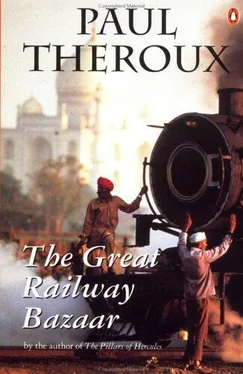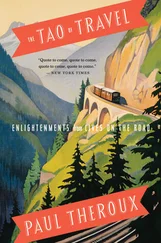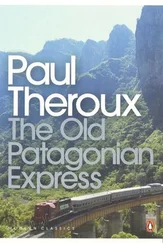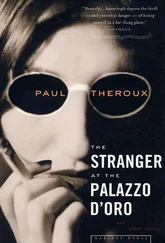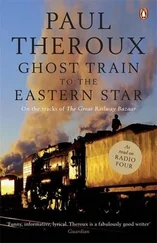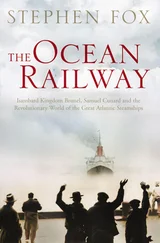So far on this trip (it is another bonus of the sleeping car) I had managed to avoid those so-called cultural evenings during which one was held captive in a hot room to applaud the degenerate spectacle of dancers and singers in feathers and beads performing numbers whose badness asked to be excused on the grounds it was traditional. But the night before I caught the Hatsukari to Aomori I had some time to spare and, for no particular reason that I can remember, decided to go to the Nichigeki Music Hall to see a two-hour show called Red Flowers Fall on Fair Skin. This was pedantically advertised as commemorating the two hundred and fiftieth anniversary of the birth of the Japanese playwright, Chikamatsu Monzaemon. Even the sadists in Japan, I was to discover, have a sense of history. There were only two or three gaijins in the audience. A cultural evening elsewhere would have been a tourist affair: I had a feeling this large local turnout would afford some insights into the Japanese use of leisure.
Just as the lights went down, two middle-aged women darted down the aisle and took their seats in the first row, giggling. The opening number was a kick line, ten Japanese girls in gold Thai-style headdresses and little else, apart from tiny gold lame bikini bottoms. The lead dancer ascended through the floor on a revolving pedestal and flourished gold snakes in front of the nimbly kicking troupe. I groaned. The music blared. After having searched the papers and rejected the noh and kabuki offerings I had come up with a tit-show. I wanted to leave, and I nearly did after the next number, a Japanese song, sung by a powdered androgynous wraith, which left me feeling as if I had just been subjected to the complete unstringing of a piano. I hung on, faintly attracted by the nakedness and finding a queer enjoyment in the dance routines, 'Cheerio! Charleston!' and 'Black Cry-Out' (a spirited episode, relating the death of Billie Holiday, with the Japanese in black-face – more a minstrel show than a comment on the race question). Up to that point most of the numbers mimicked Radio City Music Hall, but what followed owed absolutely nothing to the West.
'Aburagoroshi', which my Japanese neighbour gladly translated as 'oil-kill', began with a film of two women running into a room where, on the floor, oil lay in a wide pool. This film might have been shown at one of those university film societies that have an annual screening of L'avventura, Pather Panchali, and tedious East European cartoons: it had a pretentious chase, odd camera angles, and the kind of formal hysteria I had always associated with film-society offerings. Then one woman slipped in the oil and the other pounced on her and they began fighting. They screamed, tore at each other's hair, and gnashed their teeth, and each time the victim tried to escape she slipped in the oil and was pinned down by her pursuer. There were shots of dripping fingernails, oily hair, bums, breasts, and knees as well as outrageous cinematic effects, like that of a mouth about to engorge the screen.
While this film – growing progressively sadistic -flickered at the back of the stage, two naked Japanese girls appeared from the well at the centre of the stage and performed a live stylized version of what was taking place on the screen – that is, aping the sadism, pretending to tear at each other. The women on the screen were now gleaming with oil, and you could see it was going to end badly when one sank her teeth into the other's bum, causing the victim to thrash. The biter straddled her. The simultaneous presentation continued, two writhing nudes on the stage, two thrashing nudes on the screen. The camera shifted to show wounds, blood mixed with oil, and blood and oil coursing down the breasts of a woman on all fours. This entertainment ended showing two murderesses triumphant over the prostrate bodies of their victims, and there was much applause.
The next item, 'Ten No Amishima', began innocently enough with a film of a man fondling a woman. I asked my grinning neighbour what the title meant. He said it was simply the name of an island in the Sea of Japan where this quick feel was taking place, and I hoped, as it unfolded, that it was not on my itinerary. The man was behind the woman now and it took very little imagination to conclude that he was resolutely sodomizing her as he worked at her breasts like a man squeezing lemons – lemons rather than grapefruits. Two girls came onstage as before and demonstrated in a way that might properly be called symbolic what the man and woman were doing in the film, and a full ten minutes of lubricious sex play passed before the final scene. This was an embrace, and as the girls onstage made the beast with two backs, the man in the film hopped into the missionary position and at the moment of orgasm – a wince its only warning -drew a glittering sword from beneath the mat and cut his lover's throat. There was a close shot of the fatal laceration, of blood running between the dead woman's breasts (this seemed a popular climax), and I moved to the lobby for a breath of fresh air.
I was not quite provoked to return for 'The Blood-Stained White Body', but I saw 'Japan Sinking'. This was a hilarious portrayal, by ten nude girls and ten epicene male dancers, of how Japan will finally go under. The last number was a solo entitled 'Onna Harakiri', which is fairly explicit once you know that Onna is the name of the girl stripping off her kimono and unsheathing a sword and holding it to her stomach. A man offstage recited what sounded to be a mocking Japanese poem with the rhythm and metre of 'The Raven'. The tormented Onna, stark naked, pushed the blade in and pulled it sideways. Blood spurted from her belly, spraying the stage, and she tumbled over. But she was still alive. She knelt again and, as the poem proceeded, stabbed herself in the left thigh, the right thigh, and under each arm, releasing gouts of blood. So clever are the Japanese that it was not until her sixth attempt that I saw she was puncturing a small cellophane envelope of blood each time. Now she was covered in gore, her tatami mat was sticky with it, and the people in the front row wiped it from their faces with hankies. Finally, she succeeded: she exhibited her blood-stained body to the reverential audience and then pushed the dripping blade into her throat, impaling her head like a lollipop on a stick. Blood shot to her jaws, and, much perforated, she swooned and fell flat. The floor revolved, giving everyone a view of the carnage before the platform descended into the stage well, pausing briefly for Onna to raise a bloody floodlit hand: it was this hand the audience cheered as the lights went out.
Outside the Nichigeki Music Hall, the Japanese men who had watched with fastidious languor and then so enthusiastically applauded the savage eroticism that could enjoy no encore – baring their teeth as they did so – these men, as I say, bowed deeply to one another, murmured polite farewells to their friends, linked arms with their wives with the gentleness of old-fashioned lovers, and, in the harsh lights of the street, smiled, looking positively cherubic.
The bullet-nosed Hatsukari Limited Express (its name, 'Early Bird', refers to its arrival in Aomori, not its departure from Tokyo) leaves Ueno Station every afternoon on the dot of four. Ueno is crowded with people wearing fur hats, carrying skis and heavy coats for the snow at the end of the line: these are the vacationers. But there are returning residents, too, smaller, darker, Eskimo-faced people, on their way back to Hokkaido. The Japanese expression nobori-san ('rustics') describes them: it literally means 'the downers'; having taken the nobori 'down-train', these visitors, country-cousins spending a holiday in Tokyo, are considered yokels. On the train they stay in their seats, kick their heavy shoes off, and sleep. They look relieved to be going home and carry with them souvenirs from Tokyo: cookies wrapped in cellophane, flowers in paper cones, dried fruit bound with ribbon, dolls in tissue, stuffed toys in boxes. The Japanese are marvellous packagers of merchandise. These souvenirs are crammed in the plastic shopping bags that form the basis of the Japanese traveller's luggage. And there are other parcels, for the nobori-san, not trusting the food on Japanese National Railways, brings his own lunch pail. When he wakes, he rummages at his feet and discovers a sealed tin of rice and fish that, without stretching or rising from his padded armchair, he eats, blowing and smacking. The train itself is silent; my memory of Japanese train noises was this sound of eating, which is also the sound of a grown man inflating a balloon.
Читать дальше
